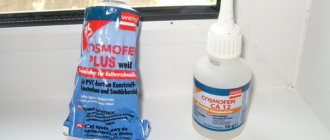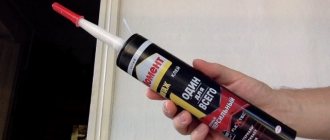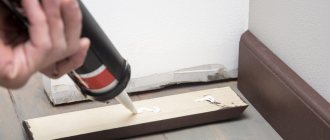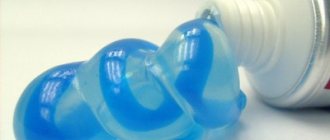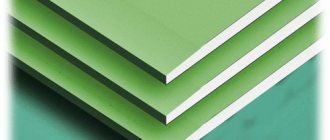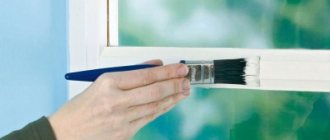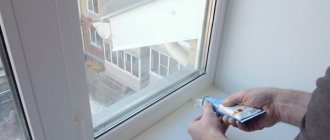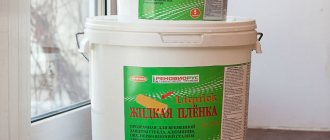Removing traces of protective film
According to the rules, the protective film must be removed immediately after installing the window. If you don't delay it, it comes off very easily and doesn't leave any marks on the plastic. However, not everyone follows this simple recommendation. Most often, windows are replaced when the apartment is undergoing renovation. And the owners, busy with more pressing problems, forget to put the windows in order. And it happens that the protective film is not removed so as not to stain the plastic with various building mixtures and paint. But the longer the film remains on the window, the stronger it adheres to the surface. And finally, a moment comes when it will be very difficult to remove it. The film comes off in small pieces, leaving a dirty sticky mark on the plastic. If this happens, the contamination must be washed off somehow. You can use one of the following:
- If the film is heated, it will come off the surface much more readily. To do this, take a hair dryer. After the film has warmed up sufficiently, remove it with a scraper designed for cleaning metal-ceramic surfaces.
- Use sharp objects to scrape off the film. A regular blade or stationery knife will do for this. Work carefully to avoid scratching the plastic. Remaining dirt can be removed with an eraser.
- Film that has already begun to crumble can be removed with a product such as White Spirit. Apply it to the problem area, wait a few minutes, and then scrub with a stiff, non-metallic brush. Clean surfaces in the same way with industrial alcohol.
- The crumbled film can be removed using tape - it is glued over the pieces, pressed well and smoothed. After an hour, the tape can be torn off - pieces of film will remain on it.
It is possible that the film itself has already been removed, but sticky dirty marks remain underneath it. You need to get rid of them immediately so that even more dust does not stick to the glue. First of all, you can try to wash these marks with products that can be found in any home - washing powder or dishwashing liquid. Even regular soap will do. Prepare a soap solution with the chosen product, apply it to the dirt and wipe off with the hard side of the sponge. If this does not help, then you will have to use special substances designed to remove glue. They can be purchased in hardware departments of stores. To work with them you must wear gloves. And before applying to the entire contaminated surface, test the purchased product on the most inconspicuous area of the window.
It happens that inscriptions from the protective film are imprinted on the plastic. If none of the above methods can be used to wash them, you will have to use a special solvent designed for plastic surfaces. This product is called “COSMOFEN 20” (precisely 20, it is less aggressive than products labeled 5 or 10). This solvent can be purchased at hardware stores or directly from the company that installed your windows. To remove letter marks, apply the product to a soft, light-colored cloth (it should not be lint-free) and lightly rub the affected areas.
Solvents should only be used to clean plastic coverings in the most extreme cases.
What is liquid plastic, where is it used and why should it not be touched with bare hands?
Liquid plastic is a material that can solve many problems. He is capable of sealing joints in window openings and welding plumbing pipes. Sometimes it is called a sealant without flaws. But is it?
Finding the ideal material for sealing industrial seams is really difficult. Acrylic sealants are inelastic and sometimes peel off after just 3-4 months after application. In addition, they turn yellow in sunlight and/or from tobacco smoke. And in conditions of high humidity they also become moldy. Silicone sealants are significantly better than acrylic ones, but they can also peel off, turn yellow and collect dirt.
Liquid plastic does not have these disadvantages. The likelihood that it will peel off and change color is zero. The fact is that this material works on the principle of diffuse welding. In simple terms, it slightly melts the surface with which it comes into contact, grows into it, and after hardening forms a monolith.
These properties are provided by the sealant formula. It consists of a solvent that comes into contact with the surfaces to be glued, and liquid PVC itself, which serves as a filler.
Liquid plastic is a fairly economical material. The recommended consumption of this sealant is 150 g/m².
The resulting seam has the same properties as PVC itself. It is durable, frost-resistant, and not susceptible to moisture and ultraviolet radiation. The smooth, pore-free surface does not collect dirt. And even if there is a lot of smoking in the house, tobacco smoke will not cause yellowing.
But does liquid plastic have any disadvantages? Unfortunately yes. The first and main thing is too fast hardening. The master has only 60 seconds to apply and smooth the mixture. After this short period of time, the sealant begins to harden, and it becomes almost impossible to work with it.
The second disadvantage is toxicity. In its solid state, liquid plastic is completely harmless, but in its liquid state it can cause serious damage. It is obvious that a solvent that can soften hard and durable PVC plastic will damage human skin in the same way. In addition, it emits a strong unpleasant odor. So, when working with it, you must use a protective mask and gloves. Upon completion of gluing, the room should be thoroughly ventilated.
Getting rid of traces of plaster
After the window is installed, all cracks around the opening are sealed. As a result of such work, drops of plaster fall on the plastic. If you notice this right away, the stain can be easily removed with a damp cloth. But if the plaster has already dried, you will have to tinker a little. It is convenient to clean the mixture with a spatula wrapped in a rag - this way you will not scratch the plastic surface with sharp edges. Trim the dried plaster as close to the base as possible, and clean the remains with a stiff brush.
Getting rid of traces of paint
Depending on what traces of paint are present on your windows, we choose the correct sequence of actions.
- If there are traces of oil paint on the surface of the windows, you can use industrial products such as Solvent or White Spirit. The best option is to remove drops of paint as soon as they hit the window. But if they are already dry and do not dissolve, you will first have to scrape them off with a sharp object. You can take a regular blade or scraper designed for cermets. It is very easy to scratch the plastic with them, you should be careful when working. Paint can also be removed from glass using a blade. Even if you have a special remover at home designed for oil-based paint, you cannot use it on plastic windows, as it contains extremely aggressive solvents. They will negatively affect the polymer coating of the window.
- Water-based paint (acrylic or latex) is very easy to clean. If the stains are very fresh, they can be washed with ordinary soapy water. Already dried droplets are carefully scraped off with a spatula, and the remaining traces are wiped off with soapy water and a hard sponge.
Under no circumstances should you remove traces of paint on plastic windows with aggressive solvents (numbers 646 and 647), acetone, as well as acidic and alkaline substances. To avoid scratches, do not use wire brushes, sandpaper or other abrasives. Use the blade only as a last resort and work with it very carefully.
Security measures
Liquid plastic for PVC windows Cosmofen contains cyanoacrylate - a dangerous substance; handling of glue should include the following precautions:
1) instantaneous gluing of the skin determines the accuracy of actions. It is necessary either to avoid getting the composition on your hands, or to connect surfaces while wearing work gloves ;
2) the manufacturer recommends not to inhale product vapors. The room must be ventilated, and any protective device (mask, respirator, etc.) can be worn on the face;
3) persons suffering from allergic reactions and sensitive to various chemical compounds should exercise extreme caution when gluing products with Cosmofen;
4) the composition of the glue is flammable , so smoking indoors is strictly prohibited!
Cosmofen is a highly effective adhesive that has some special features of use. Compliance with the above safety measures will save the technician from unpleasant consequences.
How to remove traces of liquid nails?
Materials such as liquid nails are very difficult to remove from plastic surfaces. Manufacturers recommend removing them with acetone or solvents No. 646, 647, 648. But these methods are absolutely not suitable for plastic windows. These substances are very aggressive, they corrode the plastic and spoil the appearance of the window.
Carefully study the composition of liquid nails, traces of which need to be removed. If they are water-based, they can be removed by preheating or freezing them. With this treatment, the stains lose their sticky properties. To heat the traces of liquid nails, you can take a steam generator or a hair dryer (both construction and regular ones will do). After heating, wipe off all dirt with the hard side of the sponge. For freezing, you can use regular ice from the freezer. You can also purchase special sprays. They are sold in pharmacies (for example, ICEMIX) and in hardware stores (these are used to remove chewing gum and plasticine). After freezing, liquid nails are removed with a spatula.
If liquid nails are solvent-based, they will be more difficult to handle. There are several options you can try here. Try scraping off the stains with a wallpaper knife or using nail polish remover (without acetone). Some types of liquid nails can be treated with alcohol. After trying several options, you can find one that will help remove all stains.
Popular manufacturers
The most popular sealant on the modern construction market has become Cosmofen, which represents a new generation of adhesive materials. A company called “Weiss” is the manufacturer of this substance and assures its customers that today this is the best discovery that allows performing high-quality installation work with completely different polymer surfaces.
The German manufacturer promises the highest quality and hermetic treatment of seams, which will allow you to no longer worry about changing the shade of the surface or the occurrence of mold and other issues unacceptable for human life.
Traces of whitewash
Usually, whitewash is very easy to remove with a dry cloth (you shouldn’t use a damp cloth, as this will only spread the whitewash over the surface). But after the bulk of the dirt has been removed, you can wash the window clean. To do this, use a soap solution (for plastic surfaces) and a glass cleaner. You can also prepare a homemade detergent: add 1 tablespoon of ammonia and 2 tablespoons of vinegar to 2 liters of water.
If lime whitewash was used during renovation work, it will not be so easy to remove. Traces of lime will have to be scraped off the glass with a blade or knife. To clean plastic surfaces, you can use different means:
- Industrial product Cillit. It must be diluted with water in a 1:1 ratio, applied to traces of whitewash and after a few minutes removed with a hard sponge. Before use, test the product on an inconspicuous area of the window sill, as it contains oxalic acid.
- Try cleaning the limescale with a vinegar solution. For one bucket of water you will need only one tablespoon. Instead of vinegar, you can use citric acid.
- There is another solution that will help deal with lime. Just dilute one glass of salt in a bucket of water.
- Vegetable oil can also be used to clean the profile. Add 100 grams per 10 liters of water and wash the windows with this solution. After all dirt has been removed, the profile is washed again using dishwashing detergent.
The use of liquid plastic in finishing works
Having recently appeared on the domestic market, liquid plastic has already received a positive assessment from specialized experts and taken its rightful place in the list of popular paints and varnishes. However, despite the wide range of possibilities for using this product, for most people it still remains unfamiliar and, accordingly, infrequently used at home. In this article we will try to fill this information gap and talk about the main characteristics and areas of application of liquid plastic.
Liquid plastic: technical characteristics
Liquid plastic is a one-component composition containing organic solvents, fillers in the form of acrylates, polyurethane or alkyd resins, as well as plasticizers and complex additives. In our article, as an example, we will take into consideration the universal water-dispersion acrylic paint “Akrylit-101”, which has the entire list of properties typical of high-quality liquid plastics.
The characteristics of acrylic paint “Akrylit-101” are as follows:
- Odorless, safe for humans and the environment.
- Recommended for use both for external and internal work.
- The hardened layer is not susceptible to atmospheric influences.
- Does not turn yellow over time.
- During operation, it can withstand temperature fluctuations from -60 0 C to +90 0 C.
- Has excellent adhesion to all types of surfaces.
- Forms an elastic coating that is resistant to mechanical damage.
- Material consumption for single-layer painting is 80 g/m².
- Easy to apply and shade.
- It has a fine-porous structure that provides air exchange.
- Colored according to the RAL table.
- The surface treated with paint can be cleaned with detergents.
Conditions and periods of storage of liquid plastic: 1 year at temperatures from +5 0 C to 35 0 C, up to 5 freeze-thaw cycles are allowed (the limit negative temperature should not be lower than 18 0 C).
Application area of liquid plastic
Liquid plastic is extremely versatile. It is used for decorative finishing of mineral surfaces, metal, as well as elements previously painted with pentaphthalic, nitrocellulose and oil compositions. In addition, “Acrylit-101” can be safely used as Liquid Plastic paint on wood, since it not only has excellent adhesion to this natural material, but also does not interfere with its natural “breathing” of wood and the evaporation of moisture.
Objects that can be processed with liquid plastic are represented by the following list:
- Any wooden or wood-containing elements (chipboard, fibreboard, doors, windows, garden buildings, fences, etc.).
- Decorative grilles, heating radiators, pipes and other metal products.
- Plaster, brick, concrete walls and cement slabs.
- Structural wallpaper.
By painting slate with liquid plastic, you will get an aesthetically attractive European-style roof and increase its service life by 3-4 times.
Separately, we note that acrylic paint Liquid Plastic is considered an ideal option for structural wallpaper pasted in places that are more susceptible to contamination (kitchen, corridor). Having painted the wallpaper with liquid plastic, you can clean it with any detergent and not worry about the safety of the coating.
Removing polyurethane foam from the window
Very often, when installing windows, polyurethane foam gets on the glass and profile. Large pieces of dried foam can be dealt with using a spatula by simply scraping them off. If there is a mark left on this place, or the polyurethane foam is smeared on the surface and hardens, then you will have to make some effort to wash it.
- Hot vegetable oil can easily remove fresh traces of polyurethane foam. Simply dampen a cloth and rub the stain. If the foam has already dried, you should first rub it, then cover it with a cloth soaked in oil and leave for 30 minutes. After this treatment, the stain will be much easier to remove.
- Rub the dried foam with a cloth soaked in 9% vinegar.
- Fresh foam can be removed with a product such as White Spirit. It needs to be applied with a white cloth so that the dye does not dissolve and eat into the plastic. Instead of White Spirit, you can use the liquid used to wash the mounting gun. The main thing is that the composition contains ethyl acetate.
- You can buy Dimexide in pharmacies. They can easily remove traces of polyurethane foam when the main part has already been cut off with a knife. Soak a cloth in the product and rub it over the stained area. Then cover the stain with the same rag and leave for 10 minutes. Under the influence of Dimexide, the polyurethane foam will soften and it will be easier to remove.
- You can prepare a solution yourself that will remove traces of foam. Mix 10 grams of acetone, the same amount of solvent A-648, as well as 20 grams of vinegar essence and 50 grams of liquid, which is used when washing construction guns. Since this mixture contains very aggressive substances, test it on a small area of the window before working.
Wallpaper glue that gets on the plastic surfaces of the window can be easily washed off with warm water.
Cosmofen product line
The manufacturer has significantly expanded the range of Cosmofen instant adhesives produced. Their main difference is the type of materials being connected. Therefore, all products produced have different viscosities.
Cosmofen Plus glue has a medium viscosity and a high degree of resistance to UV rays.
Cosmofen PLUS HV glue is an adhesive with a transparent structure and high viscosity. It is recommended to be used when joining plastic.
The universal composition of Cosmofen CA-12 adhesive has instant adhesion (sets in a matter of seconds). It is used in many industries and in everyday life.
Cosmofen PMMA adhesive composition is designed specifically for working with organic glass.
